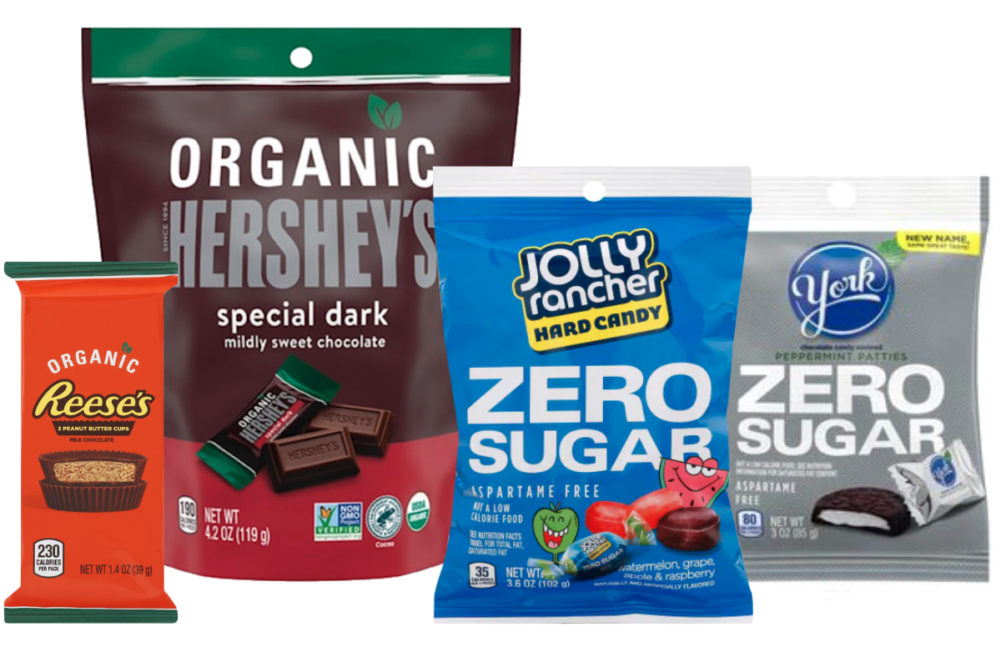HERSHEY, PA. – The Hershey Co. plans to take pricing on products that impact 10% of company sales in fiscal 2021. The price increases are expected to start during the fourth quarter of this year and flow through the first quarter of fiscal 2022. The announcement was made during a pre-recorded call on Feb. 4 that discussed the company’s fiscal 2020 financial results, which ended on Dec. 31.
“We remain committed to our strategy of smaller, more frequent pricing actions to respond to changes we are seeing in the marketplace and enable strong business reinvestment,” said Michele Gross Buck, chairman, president and chief executive officer.
Ms. Buck added that the last price increases on the affected items occurred in 2014 and 2015.
The Hershey Co. also plans to introduce more zero-sugar items and organic products during fiscal 2021.
“Our sugar-free platform has been performing well and we believe this will enable us to reach more households and provide consumers with more great tasting ways to enjoy their favorite Hershey brands,” Ms. Buck said. “And while the organic chocolate market is small, it is growing rapidly, and we are excited to bring consumers great tasting organic versions of Reese’s and Hershey’s through this targeted launch.”
In a follow-up question and answer session with financial analysts, Ms. Buck called the zero-sugar initiative a relaunch.
“The bulk of the relaunch is about repositioning sugar free in a way that is more contemporary,” she said. “You look at beverages and zero sugar and lots of other categories. I mean those products are just positioned entirely differently in a much more contemporary way. And that’s really our goal.”
Hershey had a strong year in fiscal 2020. Net income rose to $1.28 billion, equal to $6.30 per share on the common stock, up from $1.15 billion, or $5.64 per share, the year prior.
Annual sales finished at $8.15 billion, up 2% from $7.99 billion in fiscal 2019.
“COVID-19 has had a positive impact on certain confectionery products and channels while having a negative impact on others,” Ms. Buck said. “Despite changes to what and where consumers are eating, we have seen our category and our trusted brands remain important, particularly when it comes to celebrating seasons and spending time at home with family. We believe we have a strong and balanced plan to meet consumers’ needs as they change throughout the year.”
The company’s annual advertising spend in fiscal 2020 was flat in North America compared to 2019, but management plans to raise it in fiscal 2021 to maintain market share gains.
“If you think about 2020, our spending was down a little bit because we pulled back on some parts of the portfolio that we thought just weren't relevant, like refreshment this year,” Ms. Buck said. “And, so, part of our increase is restoring some spend levels in some of those areas. And that’s part of what’s driving up some of our spending as well.”
The company did not provide specific guidance for fiscal 2021 but did say performance is expected to be in line with its goals of 2% to 4% net sales growth and 6% to 8% earnings per share growth. In the North America business unit, management expects its recent performance and momentum to continue into the first quarter due to sustained elevated sales of take home and seasonal chocolate as well as additional marketplace share gains. Second-quarter and second-half results are expected to moderate given strong 2020 performance. In the International & Other segment, the company expects stabilizing sales trends across most markets, however the pace and magnitude of recovery remains uncertain.
“We expect volatility to continue in 2021, however, we have good visibility into the first quarter and are confident we can deliver another year of balanced sales and earnings growth in 2021,” said Steven E. Voskuil, chief financial officer. “From a top-line perspective, we believe many trends we saw in Q3 and Q4 will continue into the first quarter of 2021.
“As we move through the year, our performance will be impacted by the progression of COVID-19 cases and the vaccine rollout, as well as potential changes to competitive dynamics. For the full year, we do not expect material changes in innovation, promotion or inventory levels. We do, however, expect inventory to be a tailwind in the first half of the year and a headwind in the second half.”





